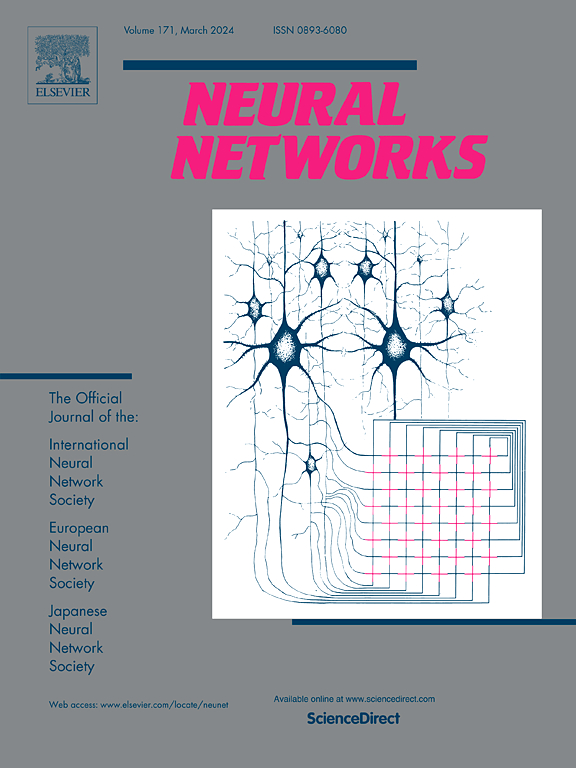Improved fractional-order gradient descent method based on multilayer perceptron
IF 6.3
1区 计算机科学
Q1 COMPUTER SCIENCE, ARTIFICIAL INTELLIGENCE
引用次数: 0
Abstract
The fractional-order gradient descent (FOGD) method has been employed by numerous scholars in Artificial Neural Networks (ANN), with its superior performance validated both theoretically and experimentally. However, current FOGD methods only apply fractional-order differentiation to the loss function. The application of FOGD based on Autograd to hidden layers leverages the characteristics of fractional-order differentiation, significantly enhancing its flexibility. Moreover, the implementation of FOGD in the hidden layers serves as a necessary foundation for establishing a family of fractional-order deep learning optimizers, facilitating the widespread application of FOGD in deep learning. This paper proposes an improved fractional-order gradient descent (IFOGD) method based on Multilayer Perceptron (MLP). Firstly, a fractional matrix differentiation algorithm and its fractional matrix differentiation solver is proposed based on MLP, ensuring that IFOGD can be applied within the hidden layers. Subsequently, we overcome the issue of incorrect backpropagation direction caused by the absolute value symbol, ensuring that the IFOGD method does not cause divergence in the value of the loss function. Thirdly, fractional-order Autograd (FOAutograd) is proposed based on PyTorch by reconstructing Linear layer and Mean Squared Error Loss module. By combining FOAutograd with first-order adaptive deep learning optimizers, parameter matrices in each layer of ANN can be updated using fractional-order gradients. Finally, we compare and analyze the performance of IFOGD with other methods in simulation experiments and time series prediction tasks. The experimental results demonstrate that the IFOGD method exhibits performances.
基于多层感知器的改进分数阶梯度下降方法。
分数阶梯度下降(FOGD)方法被许多学者用于人工神经网络(ANN),其优越的性能在理论和实验上都得到了验证。然而,目前的FOGD方法只对损失函数进行分数阶微分。将基于自grad的FOGD应用于隐层,充分利用了分数阶微分的特性,极大地提高了其灵活性。此外,在隐藏层中实现FOGD为建立分数阶深度学习优化器家族提供了必要的基础,促进了FOGD在深度学习中的广泛应用。提出了一种改进的基于多层感知器的分数阶梯度下降(IFOGD)方法。首先,提出了一种基于MLP的分数阶矩阵微分算法及其分数阶矩阵微分解算器,保证了IFOGD在隐层内的应用;随后,我们克服了由于绝对值符号导致的反向传播方向不正确的问题,保证了IFOGD方法不会引起损失函数值的发散。第三,基于PyTorch,通过重构线性层和均方误差损失模块,提出分数阶自grad (FOAutograd)算法。通过将FOAutograd与一阶自适应深度学习优化器相结合,可以使用分数阶梯度更新人工神经网络每层的参数矩阵。最后,在仿真实验和时间序列预测任务中,比较分析了IFOGD与其他方法的性能。实验结果表明,IFOGD方法具有良好的性能。
本文章由计算机程序翻译,如有差异,请以英文原文为准。
求助全文
约1分钟内获得全文
求助全文
来源期刊

Neural Networks
工程技术-计算机:人工智能
CiteScore
13.90
自引率
7.70%
发文量
425
审稿时长
67 days
期刊介绍:
Neural Networks is a platform that aims to foster an international community of scholars and practitioners interested in neural networks, deep learning, and other approaches to artificial intelligence and machine learning. Our journal invites submissions covering various aspects of neural networks research, from computational neuroscience and cognitive modeling to mathematical analyses and engineering applications. By providing a forum for interdisciplinary discussions between biology and technology, we aim to encourage the development of biologically-inspired artificial intelligence.
 求助内容:
求助内容: 应助结果提醒方式:
应助结果提醒方式:


